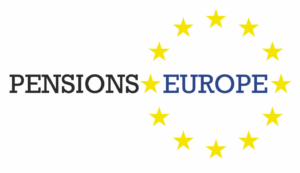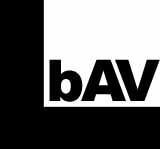Nicht die passende Methodik, falsche Schlussfolgerungen, einseitige Kommunikation: Auch der europäische bAV-Verband PensionsEurope übt Kritik an dem jüngsten EbAV-Stresstest der EIOPA – und betont eine spezielle Rolle, die EbAV in ihrem ökonomischen Umfeld spielen können.

Der jüngste EbAV-Stresstest der europäischen Aufsichtsbehörde EIOPA und seine Ergebnisse sind auf LEITERbAV bereits breit diskutiert worden, so im Vorfeld von Frank Zagermann (Mercer), als auch im Nachgang von Aon Hewitts Georg Thurnes sowie von Alf Gohdes.
Der europäische bAV-Verband Pension Europe hat sich ebenfalls zu dem Test geäußert und ist – wenig überraschend – mäßig begeistert. Das beginnt schon im Grundsätzlichen, nämlich bei der Frage, inwiefern die Methodik der EIOPA überhaupt akzeptiert ist:
„EIOPA makes very strong allegations about the healthiness of IORPs based on its own theoretical model that has not been adopted by the EU or any member state. The actual prudential rules that are in place at national level don’t support EIOPA’s findings.“
Damit stellt sich aber die Frage nach dem Sinn der Übung:
„The differences in findings highlight how EIOPA’s model is not fit for purpose.“
Konkret bemängelt der Verband, der Cashflow-Analysen für zielführender hält als die Methodik der EIOPA, das offenkundig Statische in dem Ansatz der Behörde:
„EIOPA’s model gives only a snap-shot picture of liabilities and values them based on risk free market rates which at the moment mean that the assets of pension fund funds would yield almost no return. In reality pension funds invest in the real economy, in growth and riskier assets and have in the short and long term had much better returns than what risk free interest rates provide. This means that their ability to manage their liabilities is much better than what EIOPA concludes.“

Auch der Versuch der EIOPA, eine Drittwirkung der Stress-Szenarien auf die Sponsoren der EbAV zu quantifizieren, gehe fehl. So kommentiert der Niederländer Janwillem Bouma, Chair of PensionsEurope:
„A possibility to draw conclusions on the impact on sponsors is very limited, as the stress test sample and provided answers were also very limited. However, the aggregated data on sponsors show that the values of the liability towards the IORP are rather small and barely visible. The indirect impact of the adverse scenario on the average sponsor is relatively modest. Finally, I would like to stress that it is not a role of EIOPA to supervise the sponsors.”

Matti Leppälä, PE-Generalsekretär, warf der EIOPA in diesem Zusammenhang – explizit mit der Verweis auf deren Presseerklärung – vor, „to raise unnecessary concerns about the health of the sponsor companies.“ Diese Kritik findet sich sinngemäß auch in den erwähnten LbAV-Beiträgen von Thurnes und Gohdes.
Da IORPs in ihren Heimatstaaten im Falle von Unterdeckungen regelmäßig Sanierungspflichten unterlägen, spiele auch das von EIOPA thematisierte Risiko eines „Spill over“ auf die Realwirtschaft keine ernsthafte Rolle, erst recht nicht, da der Deckungsgrad der teilnehmenden IORPs aggregiert bei 97% liege, kritisiert Bouma die Interpretation der Ergebnisse durch die EIOPA. Im Gegenteil betont er den stabilisierenden Effekt der IORPs als Investoren:
„The results confirm IORPs’ countercyclical behavior and important role in stabilizing financial markets. As long-term investors, IORPs are able to mitigate financial shocks and work as stabilizing factor for the financial sector. IORPs’ long-term investment horizon and their ability to follow contrarian investment strategies support the proposition that IORPs can act as shock absorbers in the economy by providing liquidity and by not being forced to sell assets when asset prices are squeezed.“
Die Ausführungen der PensionsEurope finden sich hier.
Der Verband kündigte außerdem für Februar/März ein ausführliches Positionspapier zu dem EIOPA-Stresstest an, das auch weitere Vorschläge bezüglich einer Cashflow-Analyse beinhalten werde.





